I Tried Cupping Like an Olympian
As we are in the midst of the 2016 Olympics, people want to know everything about these superhumans athletes: what they eat, how they train, and this week in particular, how they recover. For that last one, you can blame Michael Phelps, who showed up to the men’s 4 x 100 relay on Sunday night looking like this:
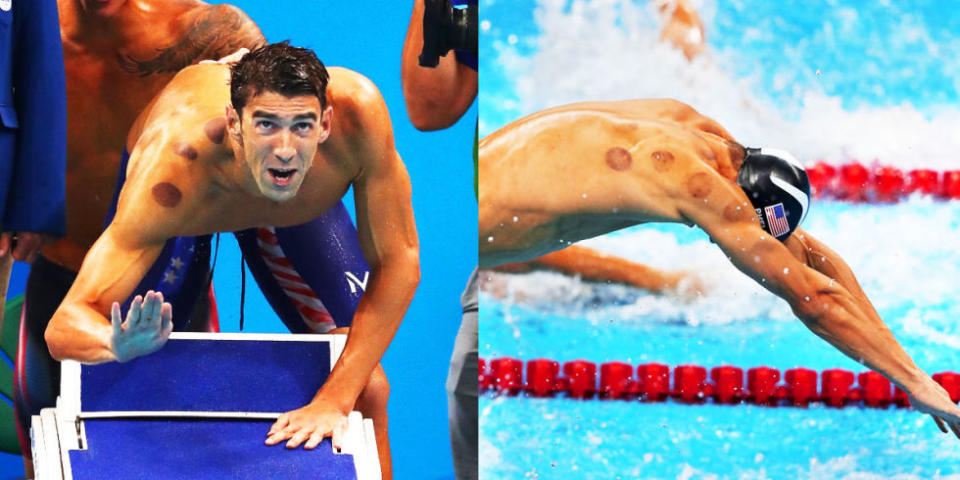
Those purple circular marks set off a frenzy of searches for the whats, whys, and hows of cupping, the ancient Chinese therapy responsible for the welts. Even Kim Kardashian was quick to jump on the trend (which, by the way, Gwyneth Paltrow has been all about since 2004).
You can think of cupping as “massage in reverse”: instead of kneading down on the muscles, suction cups lift the tissue up. Its reported benefits include improving circulation to problem areas, thus, reducing stiffness, muscle cramps, removing scar tissue, and accelerating healing. Because the cups can be left on the body for five to 10 minutes at a time, small blood vessels burst and leave behind hickey-like dots.
I am not an Olympic athlete whose muscles suffer from hours of intense training. I do, however, give my back a pretty rough beating by sitting spine-curved at a desk while staring at a computer for 10+ hours a day. I am always tense, perpetually fighting knots building up in my shoulders, neck, and lower back. I try to get deep, deep massages–the kinds that hurt–to ease my pain when I can. So, while cupping photos from the likes of Olympians Natalie Coughlin and Nathan Adrian looked totally terrifying, I was 100% game to try it myself.
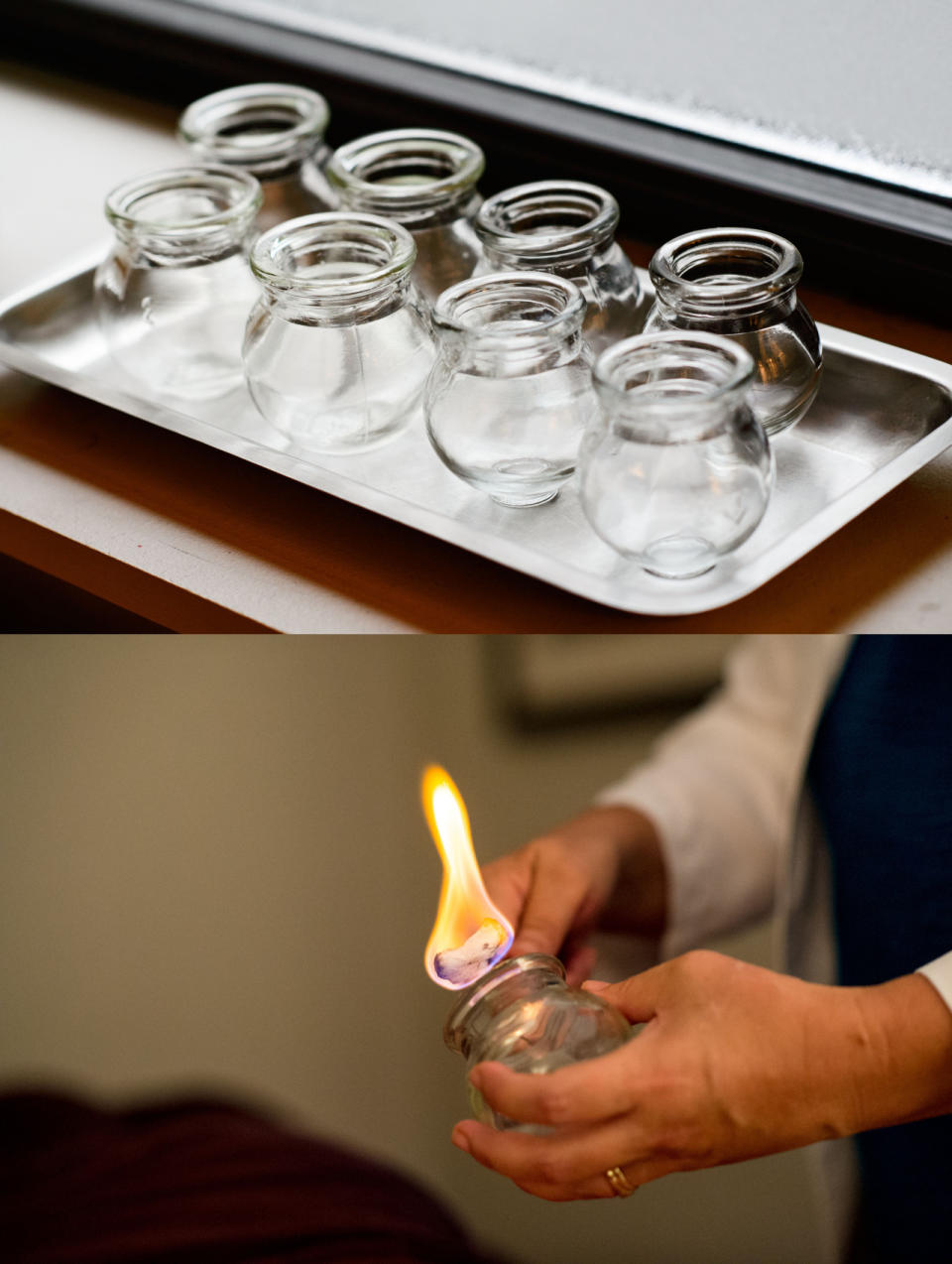
I visited the YinOva Center for cupping therapy with founder Jill Blakeway, doctor of acupuncture and Chinese medicine. We went to a warm, cozy, dimly lit room that smelled of soothing liniment. She first applied a cooling balm to my back before dipping a cotton pad in alcohol and setting it on fire. She carefully placed the flame inside the cups and quickly set them on my back. The heat did not touch my skin but I did get startled by the intense pressure I felt from the suction–like a prolonged, hard pinch. Blakeway started slowly sliding the cups up and down my shoulders, along the sides of my spine, and my lower back. As she continued, I acclimated to the unfamiliar sensation and started, finally, relaxing.
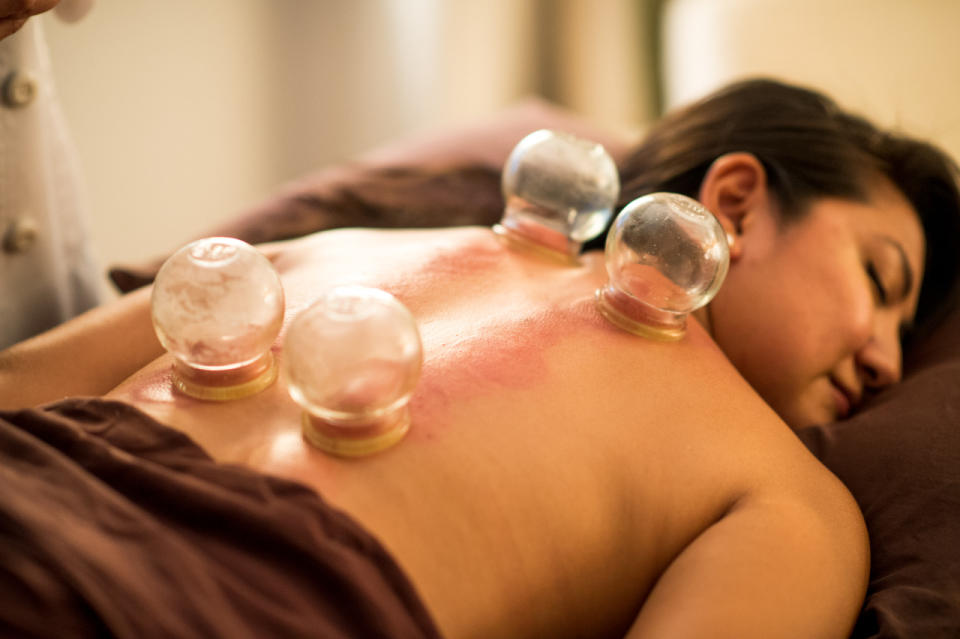
“It relieves all the tension in the muscle,” Blakeway explained while sliding and wiggling one cup up and down my spine, “It also pulls on the fascia, which is the outside of the muscle, and loosens it a bit, which feels great.” It does, in the same uncomfortable-but-great way as leaning in to pigeon pose or foam rolling over a really sore spot does.
I’m glad I couldn’t watch myself being cupped because the way the skin gets scooped up in the glass looks so freaky and red marks start showing immediately.
“That is lots of blood and lymph coming into that area,” Blakeway said of the marks, “And what it does is it starts to take away debris really quickly. It starts to realign muscle fibers, and it starts to heal some of the little micro-tears that people get in their overused muscles.”
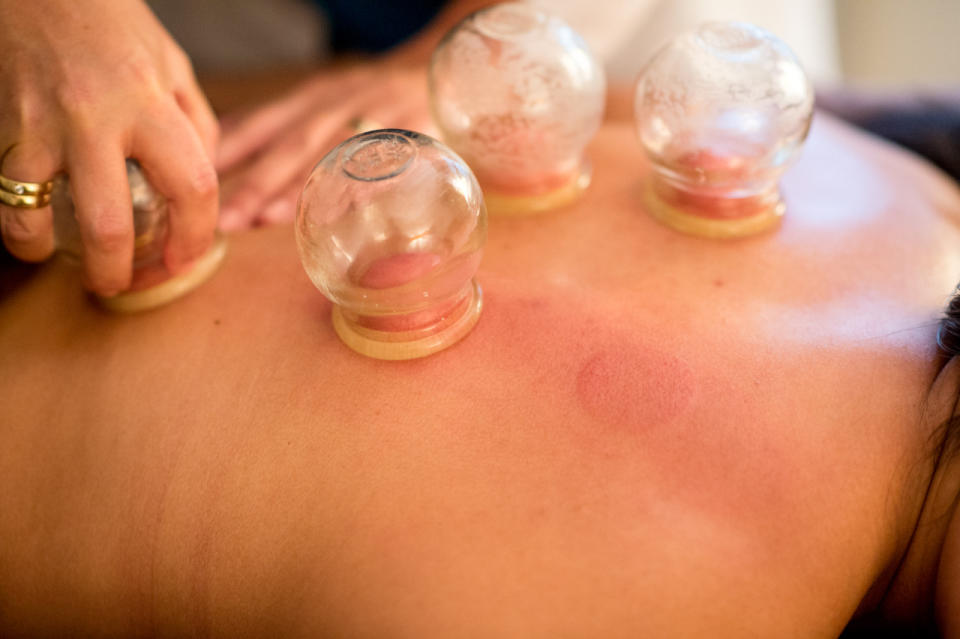
Most of the benefits you hear about cupping are anecdotal without a ton of science to back up its alleged wonders. One 2012 study of 61 people with chronic neck pain compared cupping with progressive muscle relaxation (in which you tense up the muscles deliberately then relax them). Both groups had similar reduction of pain after 12 weeks, but those who used cupping reportedly felt less pain when pressure was applied to the neck thereafter. Another 2012 experiment was done with 40 patients suffering from knee arthritis. Those who had cupping therapy reported less pain after four months compared to patients who were not treated.
Other data suggests that evidence supporting cupping isn’t strong, but evidence against it isn’t either. “The long-term effect of cupping therapy is not known, but use of cupping is generally safe based on long term clinical use and reports from the reviewed clinical studies,” one 2010 systematic review from BMC Complementary and Alternative Medicine, in which 550 clinical studies were evaluated, concludes.
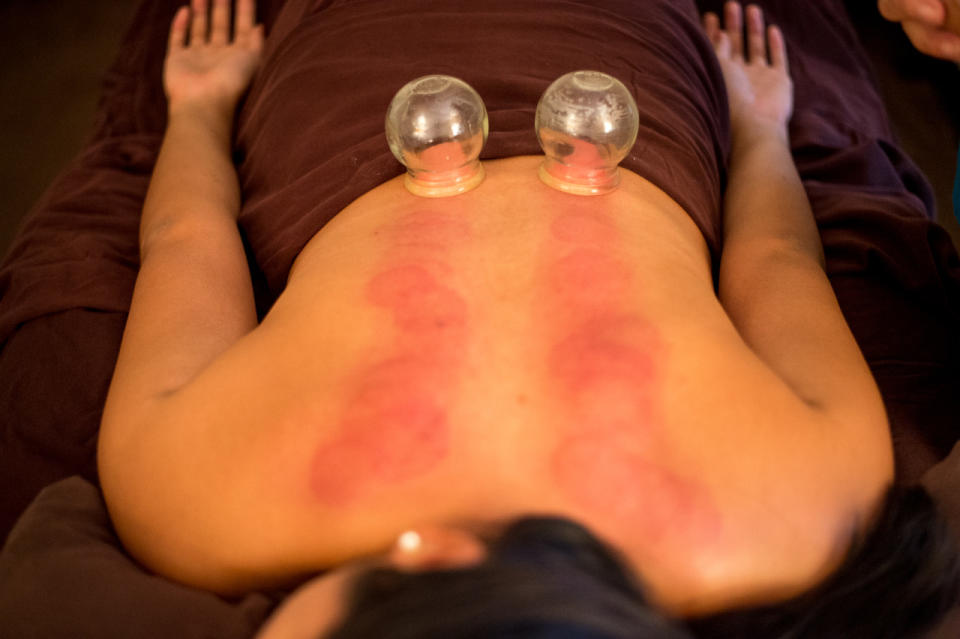
My session lasted almost half an hour. Blakeway says cupping is not usually done as a treatment by itself, but rather is combined with other modalities of Chinese medicine like acupuncture. As the cups started easing up on pressure, she removed them and started gently rolling her knuckles up and down the cupped areas. At that point, I was getting lulled very comfortably to a happy place.
Immediately after cupping, my upper back felt opened up, tension disappeared, and hours of slouching in front of a screen were undone. Post-workout soreness radiating from my lower back dissolved. Despite how gruesome it looked, my back didn’t feel terribly hurt, just a little tender in the following hours. That night, the marks darkened to a red-purple color that already started disappearing after one day. They should be gone completely within five days or less.
For vanity’s sake, I still prefer traditional massages (it is, after all, still the season of bikinis and backless bodysuits). A traditional massage is the barre class of treatments, something steady where you won’t exert too much but still sweat enough to feel great afterward whereas cupping is like bootcamp–heavy-duty. And, sometimes, your body just craves something hardcore to make the release that much more rewarding. So, when the time comes and I inevitably neglect my posture, get stressed, and sit too much, cupping will be the gold medal remedy to save the day.
Visit the YinOva Center at 74 E 11th St. New York, NY

